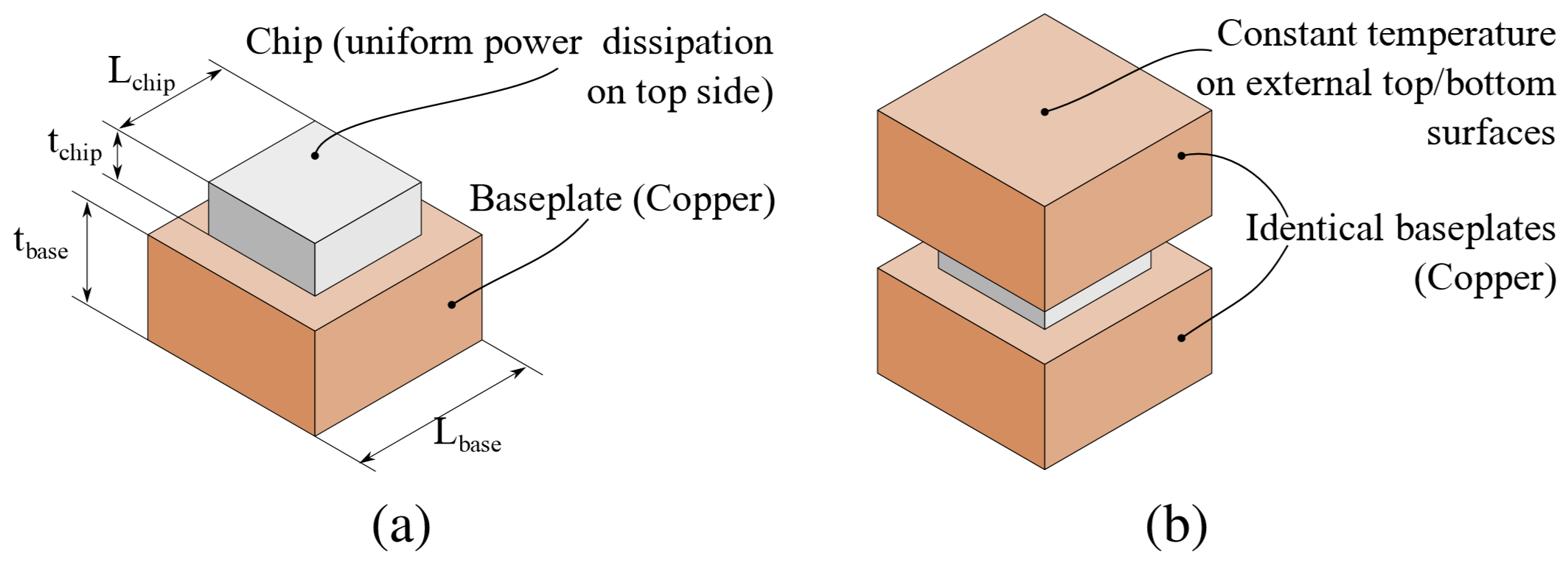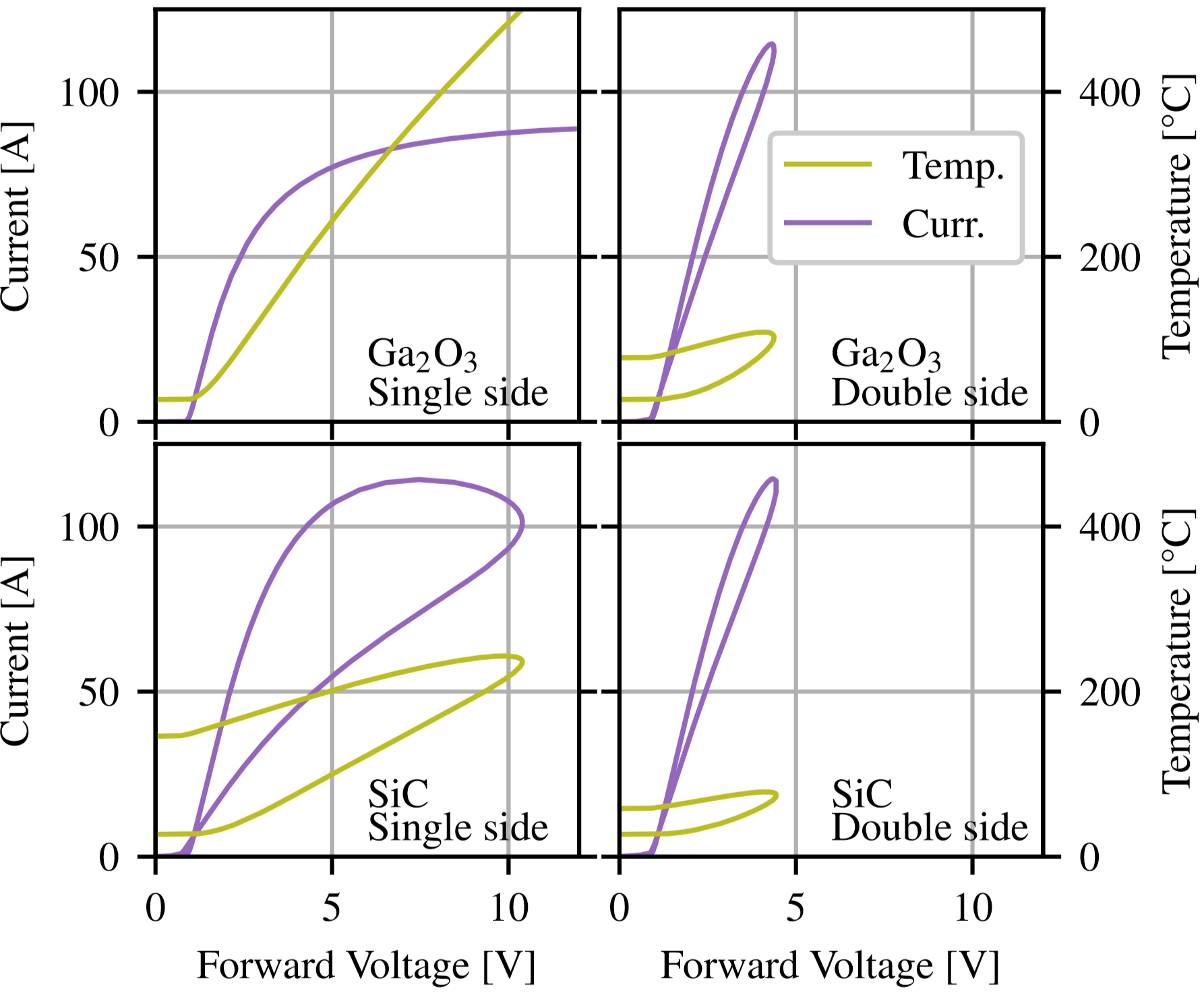LIBRARY
Surge Current Capability of Ga2O3 Schottky Diodes

A summary of the results is given in Fig. 2. In the worst thermal case (i.e a single-side cooled β-Ga2O3 diode, which corresponds to the highest total thermal impedance), it can be seen that the device enters thermal run-away for a 115 A current pulse (arbitrary value). A SiC diode (lower left corner graph in Fig. 2) with the same die size and cooling configuration exhibits a large temperature rise (more than 200 °C), but it can be expected to survive the current surge.
When considering double-side cooling (right-side graphs in Fig. 2), both diodes have very similar behaviors, with limited tem- perature rise. The improvement is especially noticeable for the β-Ga2O3 diode, because topside cooling provides a very short path for the heat dissipated at the junction (which is itself considered to be located on top of the semiconductor chip).
It is therefore found that when heat is removed through both sides of the die, a β-Ga2O3 Schottky diode offers a robustness to surge current comparable to a SiC Schottky diode. The low thermal conductivity of β-Ga2O3 is found to be balanced by the enhanced heat extraction from top-side cooling as well as by the intrinsic low on-resistance (and conduction loss) increase with temperature in β-Ga2O3 devices.























































































